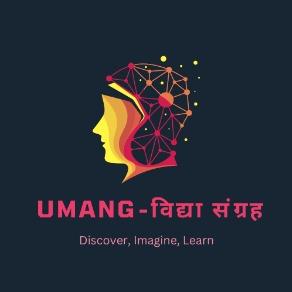UMANG -विद्या संग्रह
Discover, Imagine, Learn: Where Videos and Immersive Tech Bring Education to Life!!!
Created on 25th February 2024
•
UMANG -विद्या संग्रह
Discover, Imagine, Learn: Where Videos and Immersive Tech Bring Education to Life!!!
The problem UMANG -विद्या संग्रह solves
The hackathon project aimed at teaching basic everyday skills to children aged 2-8 through the use of videos and AR/VR filters addresses several problems commonly encountered in early childhood education:
Engagement and Retention: Traditional teaching methods might not always engage young children effectively. By leveraging interactive and visually stimulating content such as videos and AR/VR filters, the project ensures higher engagement levels, leading to better retention of essential skills.
Accessibility: Not all children have access to high-quality educational resources. This project aims to bridge the accessibility gap by providing an inclusive platform that can be accessed by children from diverse socio-economic backgrounds.
Hands-on Learning: Learning by doing is often the most effective method, especially for young children. By incorporating AR/VR filters, the project enables hands-on learning experiences that allow children to interact directly with the content, enhancing their understanding and skill development.
Multi-sensory Learning: Every child learns differently, and some may benefit more from multi-sensory experiences. By combining videos with AR/VR filters, the project caters to various learning styles, ensuring that each child can learn in a way that best suits them.
Practical Life Skills: Teaching basic everyday skills such as personal hygiene, safety habits, social interactions, and more is crucial for a child's development. This project focuses on imparting these essential life skills in an engaging and interactive manner, setting a strong foundation for their future growth and independence.
Overall, the project addresses the need for innovative and engaging educational solutions tailored specifically for young children, aiming to make learning fun, accessible, and effective during the critical early years of development.
Challenges we ran into
During the development of our hackathon project aimed at teaching basic everyday skills to children aged 2-8 through videos and AR/VR filters, we encountered several challenges:
Content Creation: Creating high-quality, engaging, and age-appropriate content for young children requires careful planning and execution. We had to ensure that the videos and AR/VR filters were not only educational but also entertaining to keep the children engaged.
Technical Complexity: Integrating AR/VR filters into educational videos presented technical challenges. We had to overcome hurdles related to software compatibility, programming languages, and hardware limitations to ensure smooth functionality across different devices and platforms.
User Experience: Designing an intuitive and child-friendly user interface was crucial for the project's success. We faced challenges in creating navigation systems and interactive elements that were easy for young children to understand and use effectively.
Accessibility: Ensuring that the project was accessible to children from diverse backgrounds, including those with disabilities or limited access to technology, was a challenge. We had to consider factors such as internet connectivity, device compatibility, and language barriers to make the content inclusive for all children.
Testing and Feedback: Conducting user testing with children in the target age group posed challenges due to ethical considerations and parental consent requirements. Gathering feedback from children and caregivers was essential for refining the content and user experience, but it required careful planning and coordination.
Time Constraints: Hackathons typically have tight deadlines, which posed challenges in terms of project management and prioritization. We had to balance innovation with practicality and focus on delivering a functional prototype within the given timeframe.
Despite these challenges, our team worked collaboratively, leveraged our diverse skills and ex
Tracks Applied (1)
Replit
Replit
Technologies used
